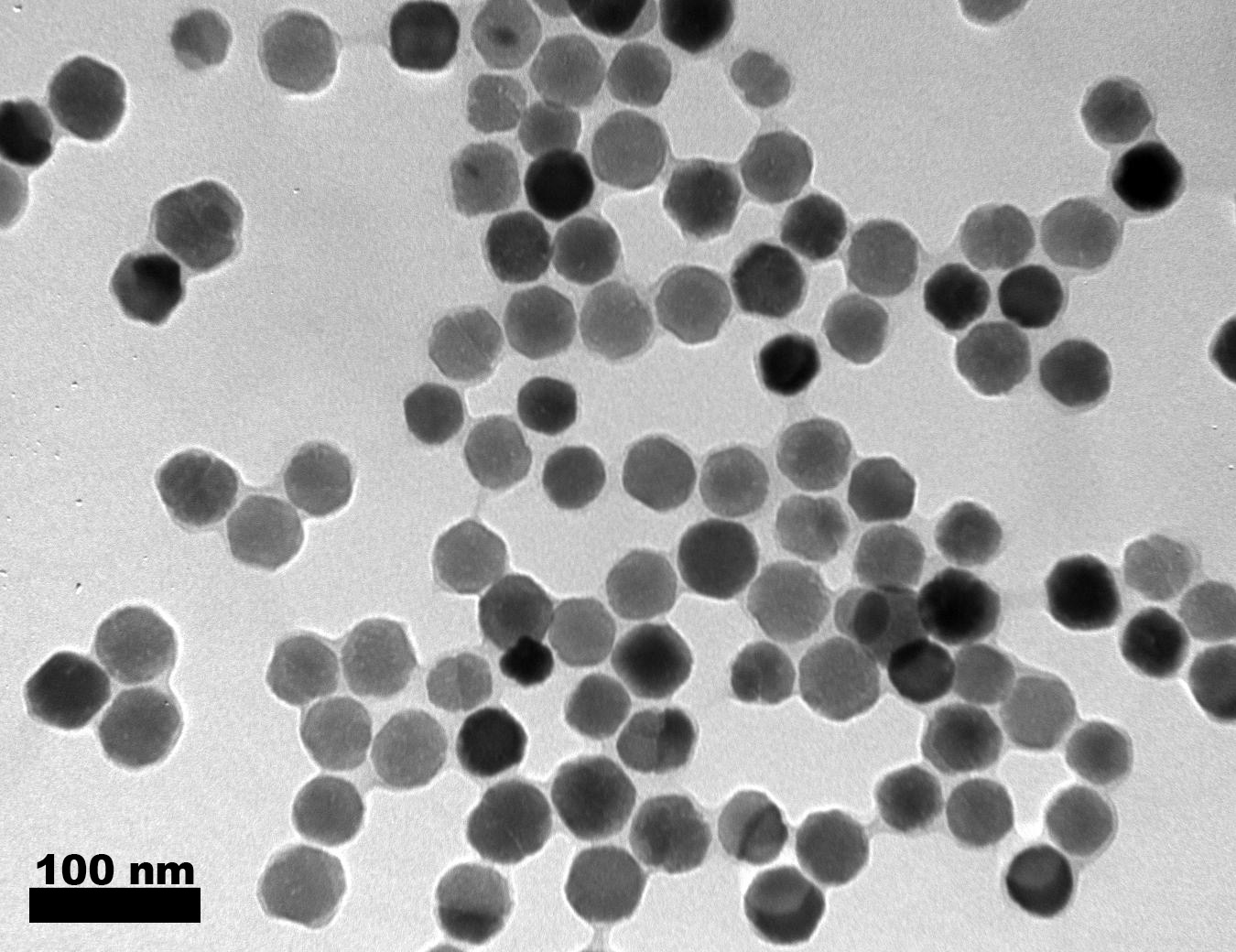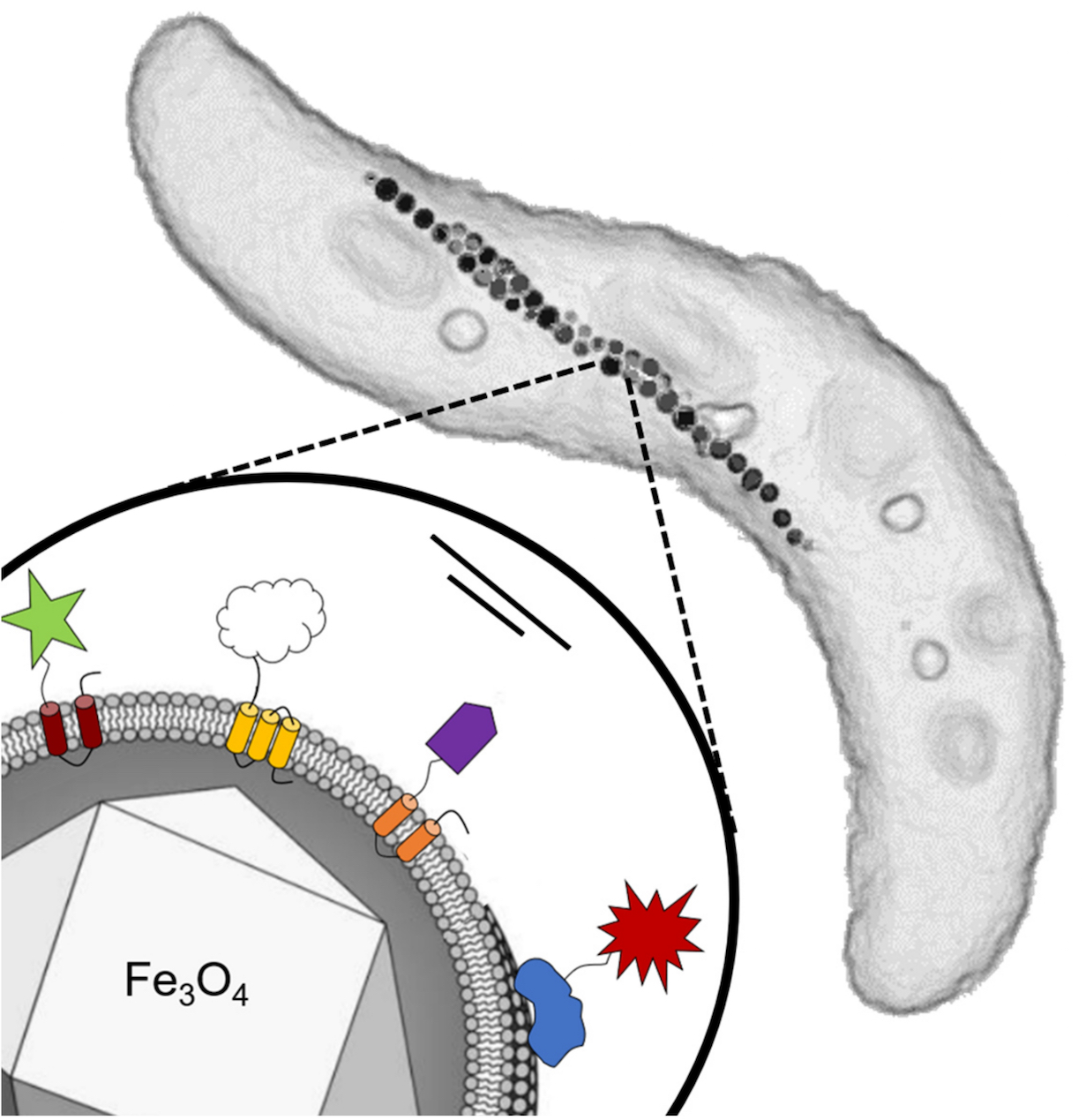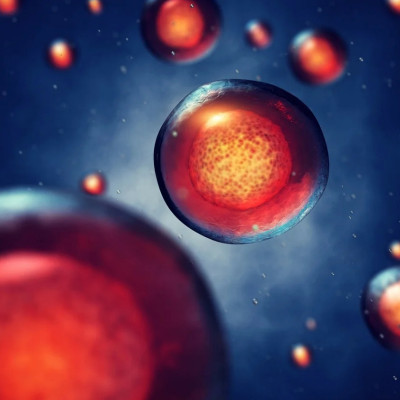The magnetotactic bacterium Magnetospirillum gryphiswaldense produces intracellular magnetic nanoparticles, so-called magnetosomes. These are arranged in a chain-like manner similar to a string of pearls, thereby forming a kind of magnetic compass needle that allows the bacteria to navigate along the Earth's magnetic field.
In contrast to chemically produced nanoparticles, magnetosomes exhibit a strikingly uniform shape and size of about 40 nanometres, a perfect crystal structure, and promising magnetic properties. Moreover, they are surrounded by a biological membrane that can be equipped with additional biochemical functionalities as required. The particles are therefore highly attractive for a number of biomedical and biotechnological applications.
 Magnetosomes isolated from magnetic bacteria.
Magnetosomes isolated from magnetic bacteria.
An interdisciplinary team of scientists at the University of Bayreuth has now defined quality criteria for purified magnetosomes, which are required for future applications. In particular, these include the uniformity (homogeneity) of magnetosomes, a high degree of purity, and the integrity of the membrane that surrounds each individual magnetosome and provides stability. Results of their research appear in the journal Acta Biomaterialia.
At the same time, the Bayreuth researchers established and optimised a method by which magnetosomes can be gently isolated from the bacteria. The newly developed procedure not only fulfils the quality criteria but is also adaptable for the isolation of larger quantities required in the broad range of applications envisioned in biomedicine and biotechnology. Results of their research appear in the journal Acta Biomaterialia.
 Top right: Schematic of a cell of the bacterium Magnetospirillum gryphiswaldense. Bottom left: Single magnetosome with an iron oxide core enveloped by a membrane. Different functional groups can be genetically fused to proteins of the membrane.
Top right: Schematic of a cell of the bacterium Magnetospirillum gryphiswaldense. Bottom left: Single magnetosome with an iron oxide core enveloped by a membrane. Different functional groups can be genetically fused to proteins of the membrane.
The magnetosome purification process developed in Bayreuth is based on the physical properties of the magnetic nanoparticles. First, the magnetosomes are separated from other non-magnetic cell components by magnetic columns. Second, due to the high density of the nanoparticles, an additional ultracentrifugation step allows the removal of residual impurities. The quality of the purified magnetosome suspensions was assessed by physico-chemical techniques. In addition, the biocompatibility was tested in close collaboration with the Jena University Hospital.
These analyses revealed high vitality values of magnetosome-treated human cell lines even at high particle concentrations. This indicates good biocompatibility according to relevant DIN standards, which represents a prerequisite for use of magnetosomes in magnetic imaging techniques or targeting of cancer cells by magnetically controlled drug delivery. Moreover, the nanoparticles might have great potential in the field of theranostics, which combines precise diagnosis with subsequent targeted therapy.
Read the original article on University of Bayreuth.
